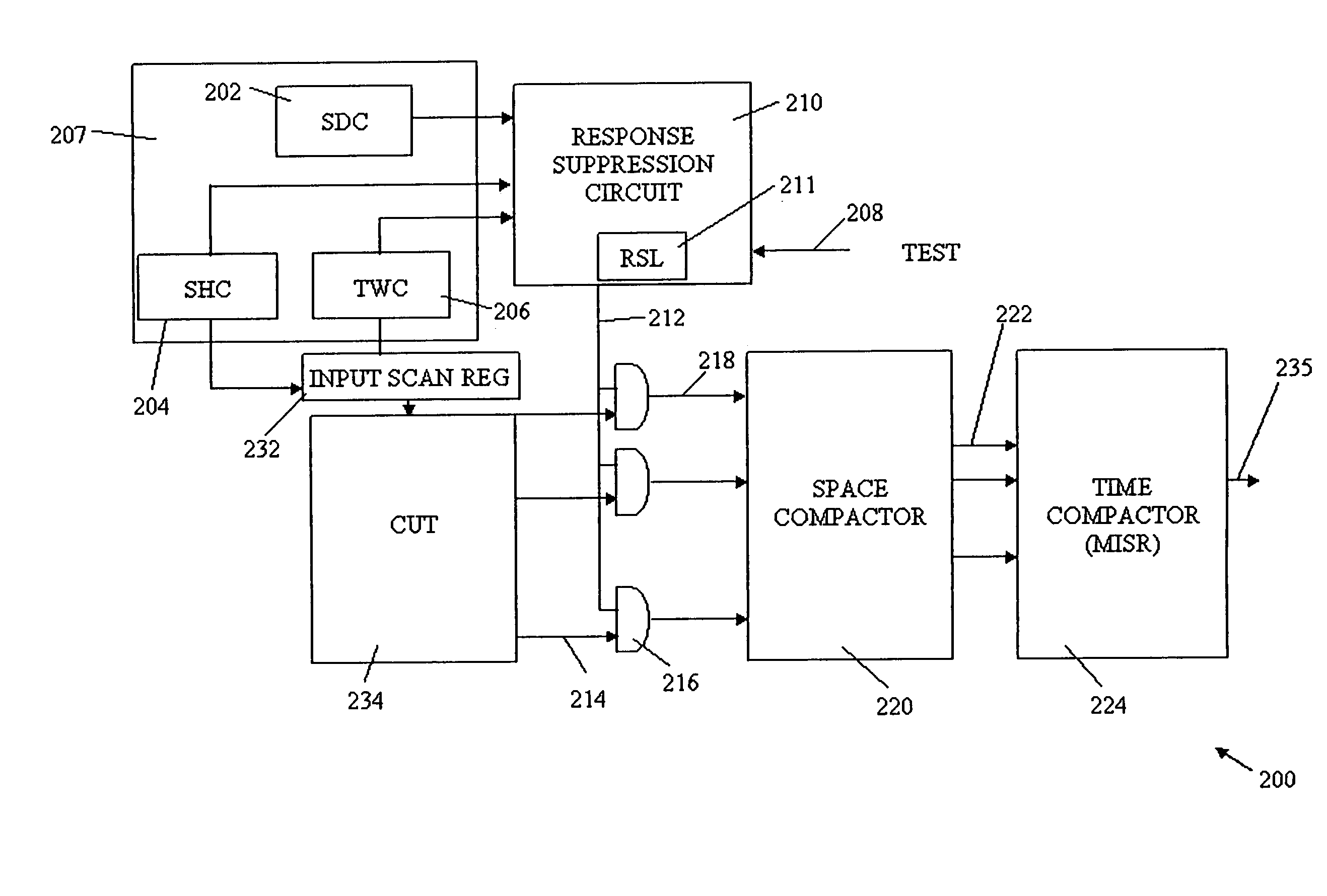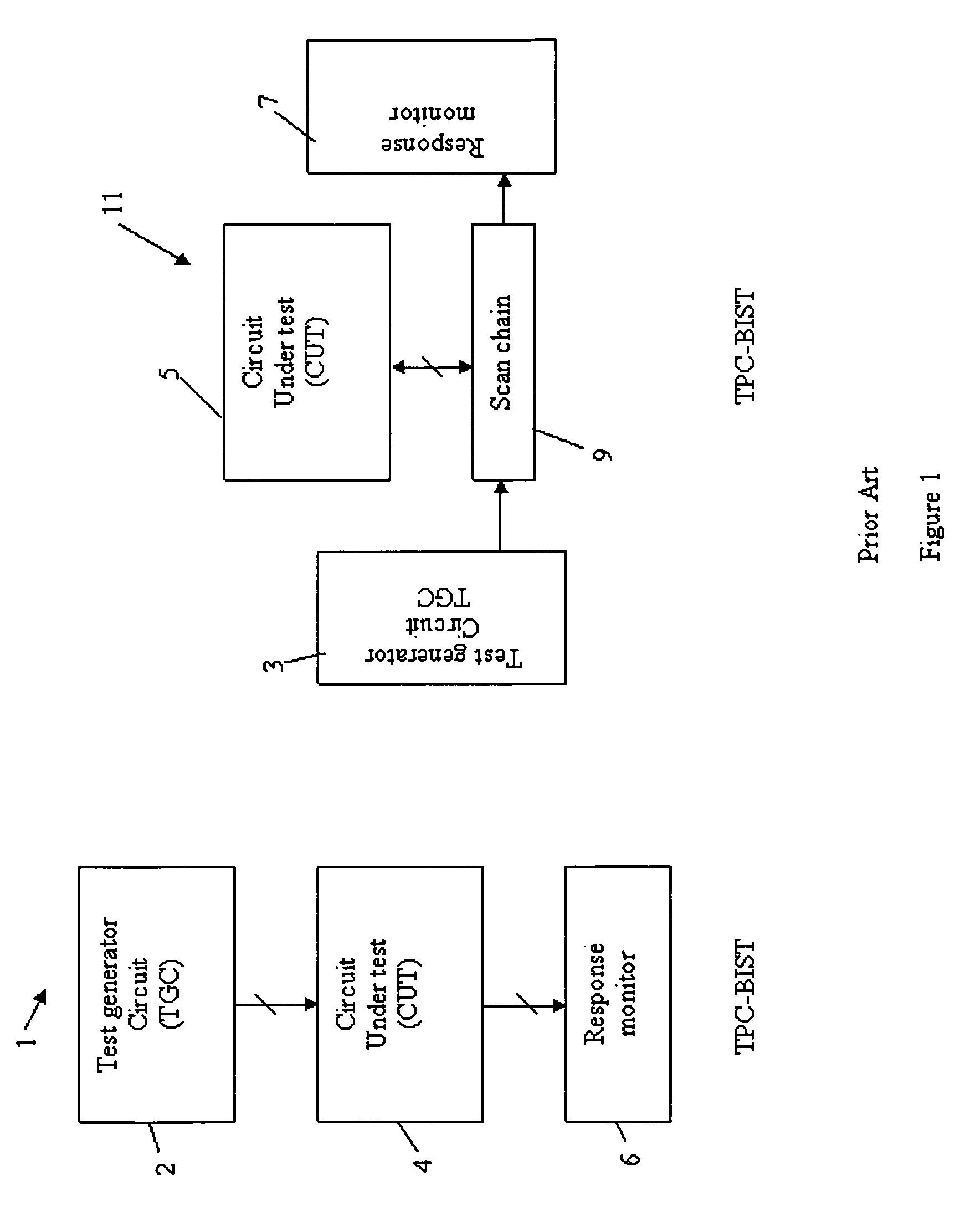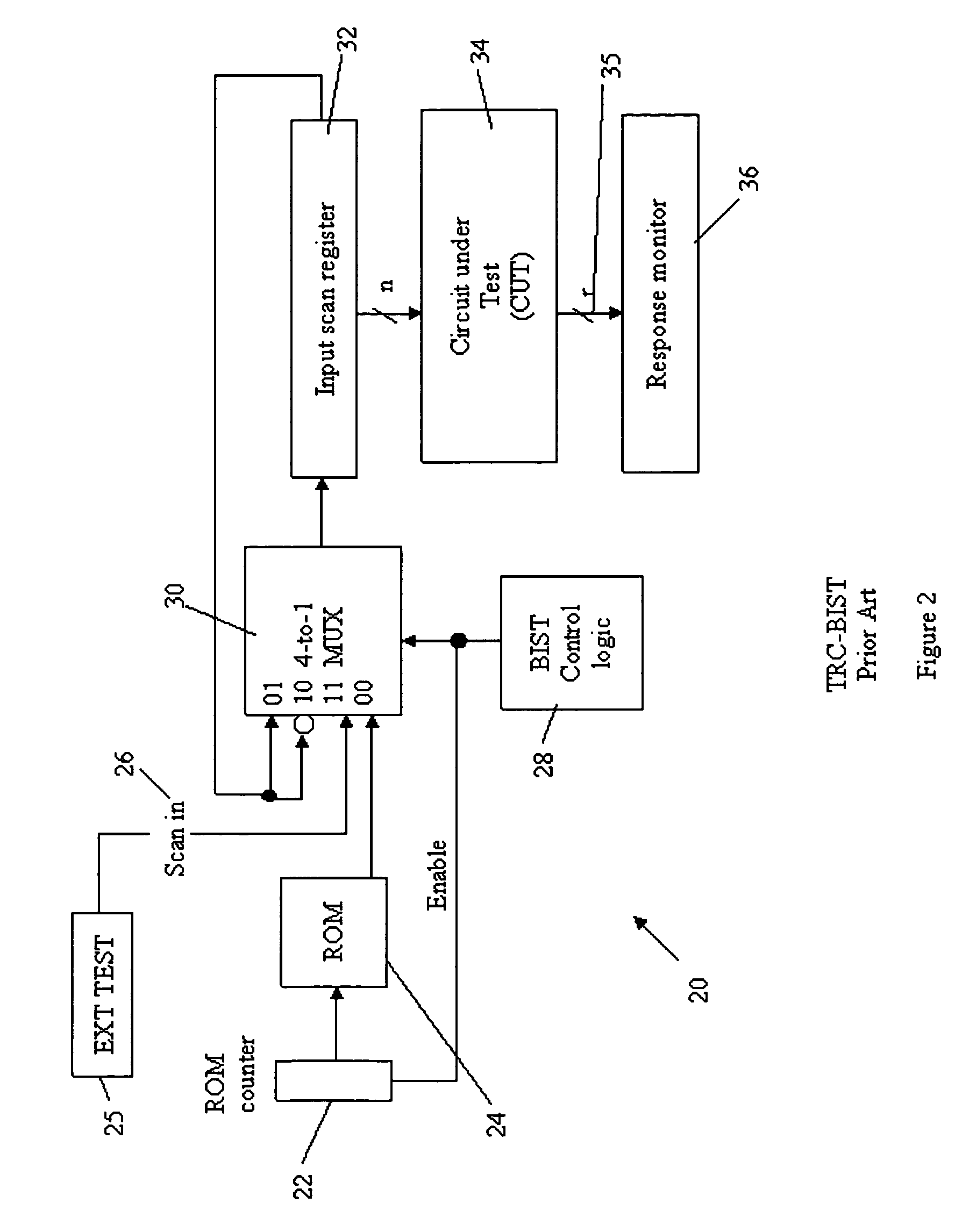Method and apparatus to disable compaction of test responses in deterministic test-set embedding-based BIST
a test response and deterministic test technology, applied in the field of integrated circuits, can solve the problems of unsuitable methods for testing high-performance circuits, disadvantages of trc-based test architecture, and sometimes too many seeds required for test architectur
- Summary
- Abstract
- Description
- Claims
- Application Information
AI Technical Summary
Benefits of technology
Problems solved by technology
Method used
Image
Examples
Embodiment Construction
[0018]While test set embedding helps to reduce test data volume, it also impacts the size of the space compactor since the space compactor now has to deal with a larger number of distinct fault free responses. What is new in the present invention is a system and method that effectively suppresses extra CUT responses to patterns in reseeding-based pattern applications. Suppressing superfluous responses helps to reduce the number of outputs of a space compactor and thereby reduces test bandwidth and tester cost. In one aspect of the present invention, test-set embedding is used for storing a small number of seeds and compressing only responses of ATPG patterns embedded in a deterministic sequence obtained from those seeds. The present invention uses the test set embedding scheme described in an enhanced TRC-BIST architecture for pattern application.
[0019]An enhanced TRC-BIST pattern generator architecture 20 appropriate for use with the present invention is illustrated in FIG. 2 and t...
PUM
 Login to View More
Login to View More Abstract
Description
Claims
Application Information
 Login to View More
Login to View More - R&D
- Intellectual Property
- Life Sciences
- Materials
- Tech Scout
- Unparalleled Data Quality
- Higher Quality Content
- 60% Fewer Hallucinations
Browse by: Latest US Patents, China's latest patents, Technical Efficacy Thesaurus, Application Domain, Technology Topic, Popular Technical Reports.
© 2025 PatSnap. All rights reserved.Legal|Privacy policy|Modern Slavery Act Transparency Statement|Sitemap|About US| Contact US: help@patsnap.com



